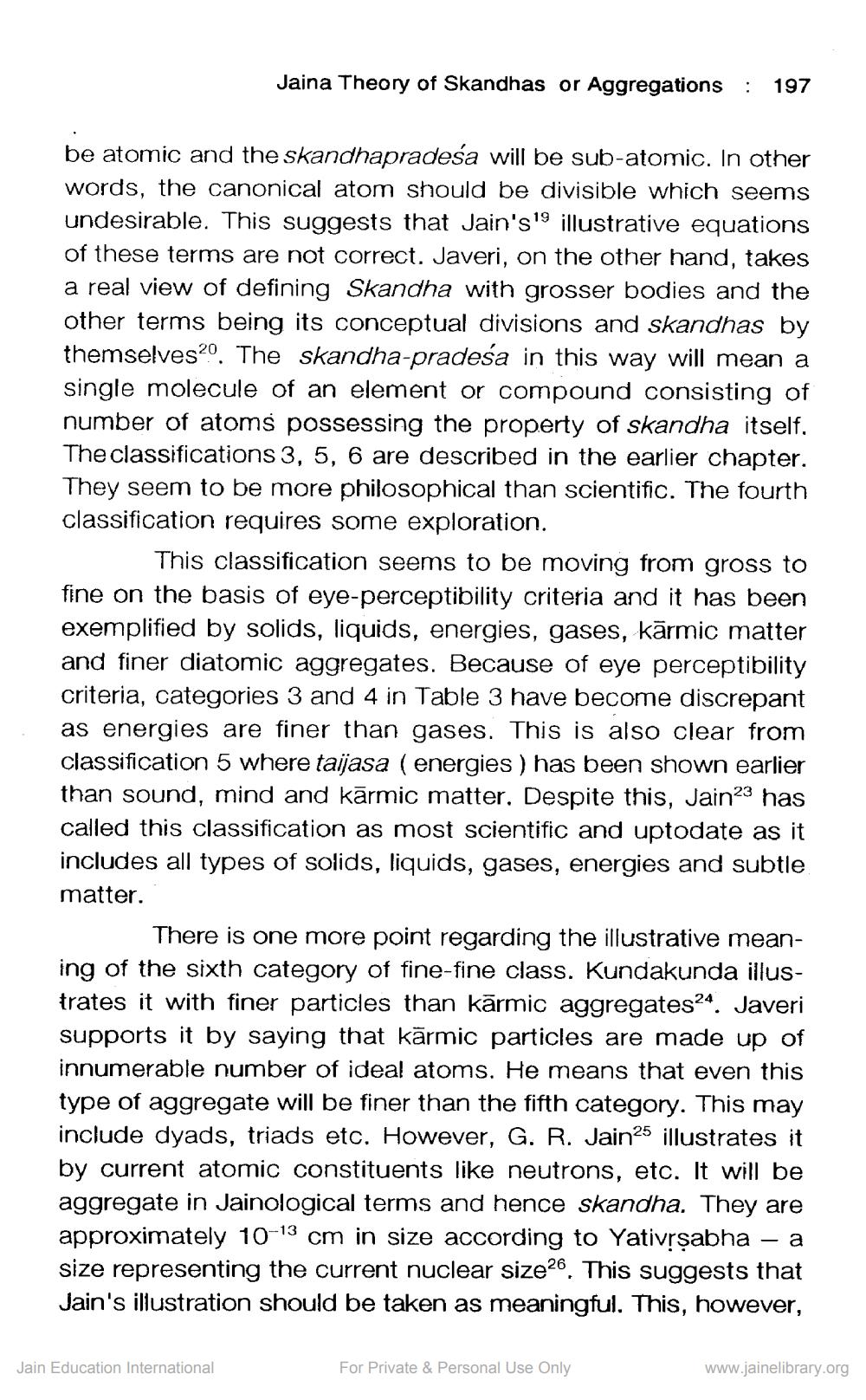________________
Jaina Theory of Skandhas or Aggregations : 197
be atomic and the skandhapradeśa will be sub-atomic. In other words, the canonical atom should be divisible which seems undesirable. This suggests that Jain's '9 illustrative equations of these terms are not correct. Javeri, on the other hand, takes a real view of defining Skandha with grosser bodies and the other terms being its conceptual divisions and skandhas by themselves20. The skandha-pradeśa in this way will mean a single molecule of an element or compound consisting of number of atoms possessing the property of skandha itself, The classifications 3, 5, 6 are described in the earlier chapter. They seem to be more philosophical than scientific. The fourth classification requires some exploration.
This classification seems to be moving from gross to fine on the basis of eye-perceptibility criteria and it has been exemplified by solids, liquids, energies, gases, kārmic matter and finer diatomic aggregates. Because of eye perceptibility criteria, categories 3 and 4 in Table 3 have become discrepant as energies are finer than gases. This is also clear from classification 5 where taijasa (energies ) has been shown earlier
and karmic matter. Despite this, Jain2 has called this classification as most scientific and uptodate as it includes all types of solids, liquids, gases, energies and subtle matter.
There is one more point regarding the illustrative meaning of the sixth category of fine-fine class. Kundakunda illustrates it with finer particles than kārmic aggregates24. Javeri supports it by saying that kārmic particles are made up of innumerable number of ideal atoms. He means that even this type of aggregate will be finer than the fifth category. This may include dyads, triads etc. However, G. R. Jain25 illustrates it by current atomic constituents like neutrons, etc. It will be aggregate in Jainological terms and hence skandha. They are approximately 10-13 cm in size according to Yativșşabha – a size representing the current nuclear size26. This suggests that Jain's illustration should be taken as meaningful. This, however,
Jain Education International
For Private & Personal Use Only
www.jainelibrary.org




